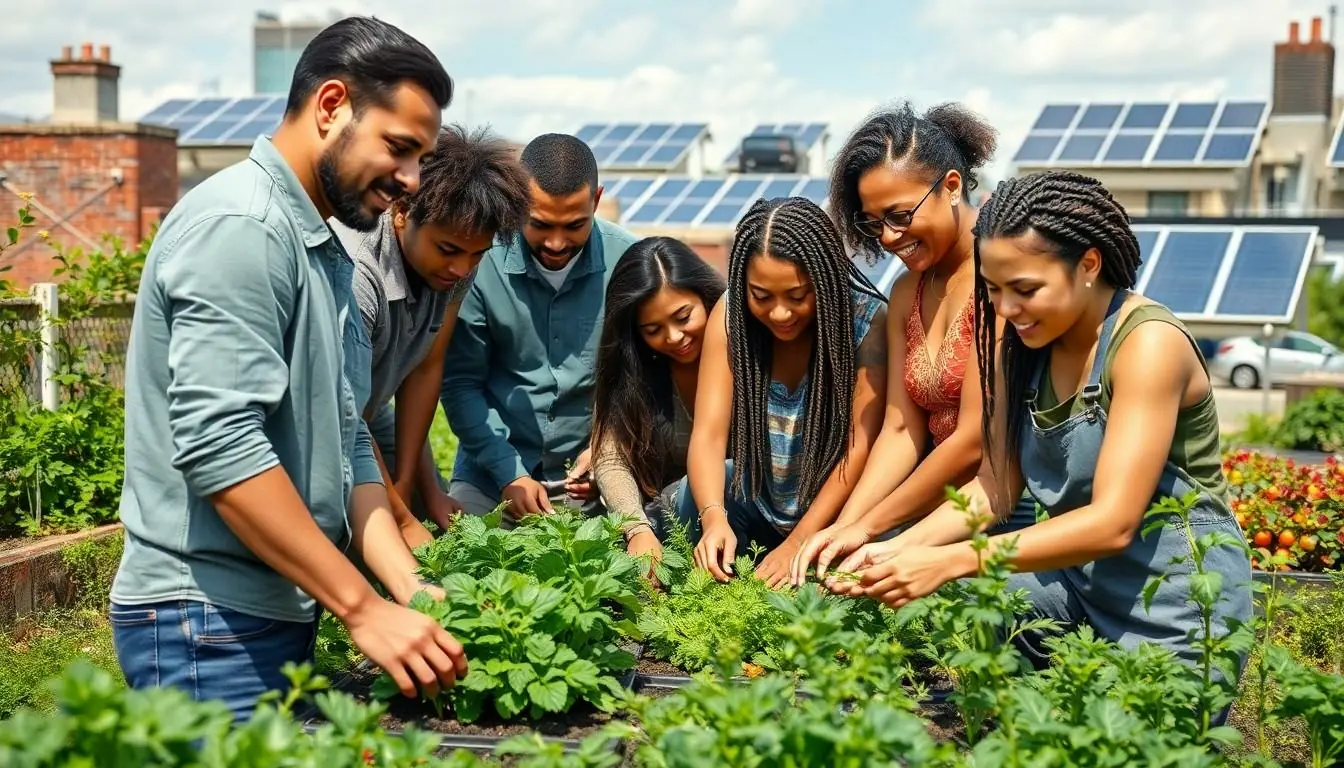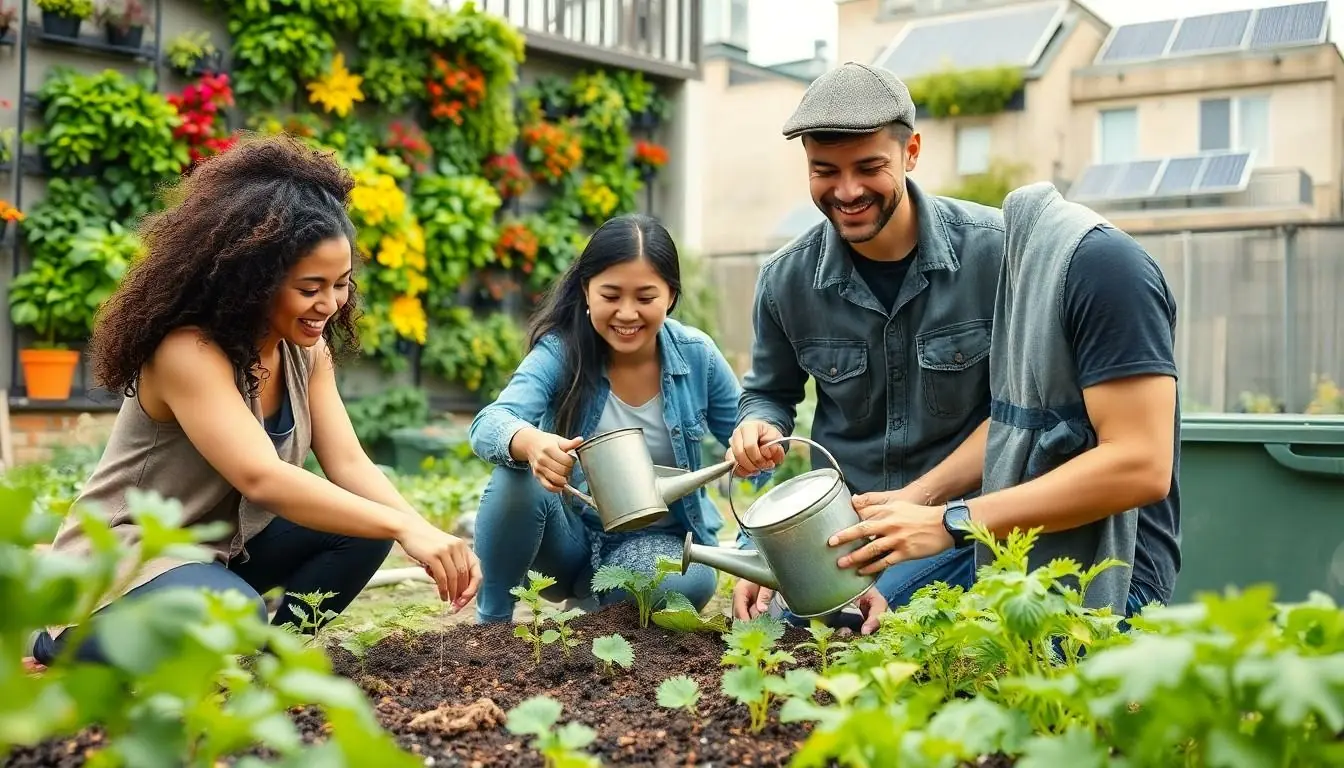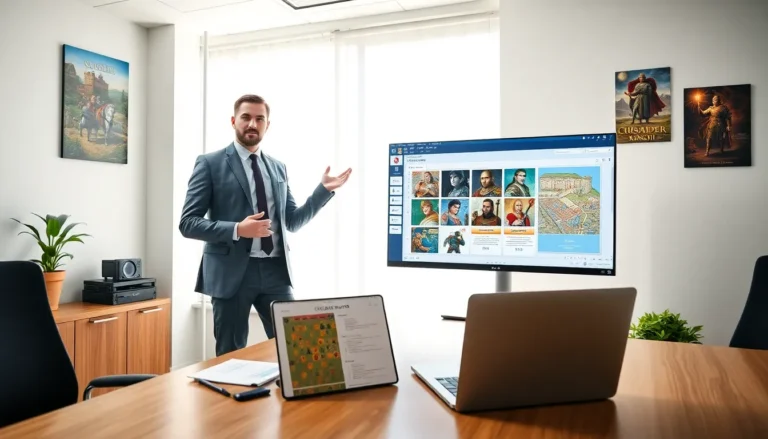Table of Contents
ToggleIn a world where plastic seems to outnumber people, sustainable living innovations are stepping up to save the day—and the planet. Imagine a lifestyle that not only keeps your conscience clear but also makes Mother Nature smile. From solar-powered gadgets that make you feel like a superhero to zero-waste products that turn trash into treasure, these innovations are the future.
Overview of Sustainable Living Innovations
Sustainable living innovations evolve continuously to combat environmental challenges. Researchers focus on creating solutions that minimize waste and energy consumption. Solar-powered gadgets exemplify advancements in energy efficiency. These devices harness renewable sources for daily activities, reducing reliance on fossil fuels.
Zero-waste products demonstrate another significant trend. Companies design items that transform waste into valuable resources, promoting circular economies. Examples include reusable containers and compostable packaging materials. Such innovations help divert trash from landfills, fostering a more sustainable lifestyle.
Green building technologies also play a crucial role. Innovations in energy-efficient appliances streamline energy use in homes. Smart home systems track consumption patterns, allowing users to optimize their energy bills. Sustainable building materials, like reclaimed wood and recycled steel, further enhance eco-friendliness.
Electric vehicles present a practical solution for reducing carbon emissions. They contribute to a cleaner transportation sector by offering alternatives to gas-powered engines. Charging infrastructure expands to meet growing demand, encouraging more people to adopt electric cars.
Sustainable agriculture practices support food systems through methods like vertical farming and permaculture. These approaches yield crops while conserving resources and minimizing chemical use. Urban farms grow produce in cities, reducing the need for transportation and preserving local ecosystems.
Innovative water conservation technologies address freshwater scarcity. Smart irrigation systems adjust water flow based on weather conditions, enhancing efficiency. Rainwater harvesting systems collect and store valuable water for landscaping and non-potable uses.
Sustainable fashion emerges as a response to resource-intensive clothing production. Brands increasingly utilize eco-friendly materials and ethical practices. By promoting mindful consumption, this sector reduces environmental impact.
Benefits of Sustainable Living Innovations

Sustainable living innovations provide numerous advantages that enhance both environmental health and economic viability. These benefits range from reducing ecological footprints to fostering economic growth in green sectors.
Environmental Impact
Sustainable living innovations significantly reduce pollution and resource depletion. They promote practices such as recycling and waste reduction through zero-waste products. Solar-powered devices cut fossil fuel dependency while preserving natural resources. Innovations like smart irrigation systems enhance water conservation by optimizing usage. Urban farms contribute to local food production, decreasing the carbon emissions associated with transportation. Studies show that adopting sustainable practices can reduce greenhouse gas emissions by up to 70%. These solutions support healthier ecosystems, showcasing the vital link between innovation and environmental stewardship.
Economic Advantages
Sustainable innovations drive economic growth by creating jobs in emerging green sectors. The renewable energy industry alone employs over 3 million people in the U.S. By investing in energy-efficient technologies, businesses can reduce operational costs, improving profitability. Consumers increasingly prefer eco-friendly products, spurring demand in the market. Sustainable practices also enhance brand loyalty, with 66% of consumers willing to pay more for sustainable brands. Transitioning to sustainable living fosters economic resilience, attracting investments and stimulating local economies. Ultimately, these innovations position communities for sustainable economic success.
Types of Sustainable Living Innovations
Innovative solutions are making strides in sustainable living, creating pathways for a greener future. Several key areas emphasize the transformation in how communities function and interact with their environment.
Energy Efficiency Technologies
Solar panels stand out as leading energy-efficient technologies. They convert sunlight into electricity, significantly reducing fossil fuel dependence. Energy-efficient appliances play a crucial role by consuming less power, which lowers utility bills and minimizes the carbon footprint. Smart thermostats also enhance energy management, adapting the indoor climate to personal preferences while saving energy. The role of wind turbines grows, harnessing wind power to generate clean electricity. Collectively, these technologies drive advancements in sustainability, enabling homes and businesses to operate more efficiently.
Water Conservation Methods
Smart irrigation systems revolutionize the approach to water usage in agriculture and landscaping. These systems monitor moisture levels and distribute water accordingly, preventing waste. Rainwater harvesting systems capture and store rain for reuse, alleviating demands on municipal water supplies. Water-efficient fixtures also contribute, including low-flow faucets and showerheads that reduce water consumption without sacrificing performance. Collectively, these methods represent significant strides in conserving water, essential in the face of global water scarcity.
Waste Reduction Strategies
Zero-waste initiatives actively aim to reduce waste generation in various sectors. Community composting programs encourage organic waste diversion from landfills by transforming it into valuable compost. Businesses increasingly implement recycling programs to reclaim materials, minimizing the need for new resource extraction. Reusable product movements also rise, with consumers opting for items like stainless steel straws and cloth bags to replace single-use plastics. Innovative approaches to upcycling further maximize material use, turning discarded items into new products. These waste reduction strategies significantly impact resource conservation and promote a circular economy.
Case Studies of Successful Innovations
Innovative sustainable living practices continue to gain traction, showcasing real-world implementations within urban and rural settings.
Urban Examples
Cities worldwide demonstrate significant advancements in sustainable living. In San Francisco, extensive composting programs divert approximately 1.5 million tons of organic waste from landfills each year. Likewise, New York City supports green roofs and vertical gardens, enhancing air quality and providing insulation. Solar panel installations on rooftops empower residents to reduce reliance on fossil fuels, generating around 150 megawatts of renewable energy annually. Moreover, bike-sharing programs promote eco-friendly transportation and decrease traffic congestion, resulting in a cleaner urban environment. These collective efforts significantly impact urban sustainability, fostering community engagement and enthusiasm for green practices.
Rural Examples
Rural areas also illustrate effective sustainable innovations. In Iowa, farmers utilize cover crops and crop rotation methods to enhance soil health and reduce chemical needs. These farming practices contribute to improved water quality by minimizing runoff. Additionally, many rural communities are adopting solar energy solutions, enabling households to become energy independent while decreasing carbon footprints. Rainwater harvesting systems have become common, allowing families to capture and store rainfall for agricultural needs, promoting water conservation. Furthermore, local markets for organic produce strengthen regional economies while reducing transportation emissions. Such strategies exemplify how rural areas embrace sustainability and show measurable benefits.
Future Trends in Sustainable Living Innovations
Emerging technologies continue to shape sustainable living, showcasing a promising landscape for eco-friendly practices. Smart homes utilize energy-efficient devices that conserve resources while enhancing comfort. Urban landscapes increasingly integrate green roofs and vertical gardens, providing natural insulation and promoting biodiversity.
Innovations in renewable energy reflect significant shifts in market trends. Solar panels with advanced efficiencies capture more sunlight, while wind turbines harness greater wind power. Electric vehicles gain traction, and expanded charging networks support their adoption, reducing reliance on fossil fuels.
Textile industry changes highlight the rise of sustainable fashion. Brands embrace organic materials and ethical production, responding to consumer demand for environmentally conscious choices. Recycled fabrics gain popularity, further driving the movement toward mindful consumption.
Water conservation methods see major innovations. Smart irrigation systems optimize water usage, ensuring efficient distribution according to plant needs. Rainwater harvesting practices become increasingly common in urban and rural settings, lowering pressure on local water supplies.
Waste reduction initiatives continue to thrive as communities implement innovative strategies. Composting programs transform organic waste into valuable resources, while reusable products expand in popularity, minimizing single-use plastics. Circular economy models gain attention, emphasizing resource reuse and waste diversion from landfills.
Technological advancements in sustainable agriculture signal a shift toward eco-friendly food production. Aquaponics and hydroponics provide sustainable alternatives to traditional farming, maximizing space and reducing resource inputs. Lastly, community-supported agriculture strengthens local food systems, fostering connections between consumers and producers.
Each of these trends highlights the ongoing commitment to sustainable living innovations, revealing pathways to a greener future.
Sustainable living innovations are paving the way for a greener future. They not only address pressing environmental challenges but also enhance the quality of life for individuals and communities. As these innovations evolve they create new opportunities for economic growth while promoting eco-friendly practices.
The shift towards renewable energy water conservation and waste reduction is becoming increasingly vital. With the rise of smart technologies and sustainable materials consumers are empowered to make choices that benefit both the planet and their wallets.
By embracing these innovations society can foster a culture of sustainability that prioritizes environmental health and economic resilience. The journey toward a sustainable lifestyle is not just a trend; it’s a necessary evolution for a thriving planet.






